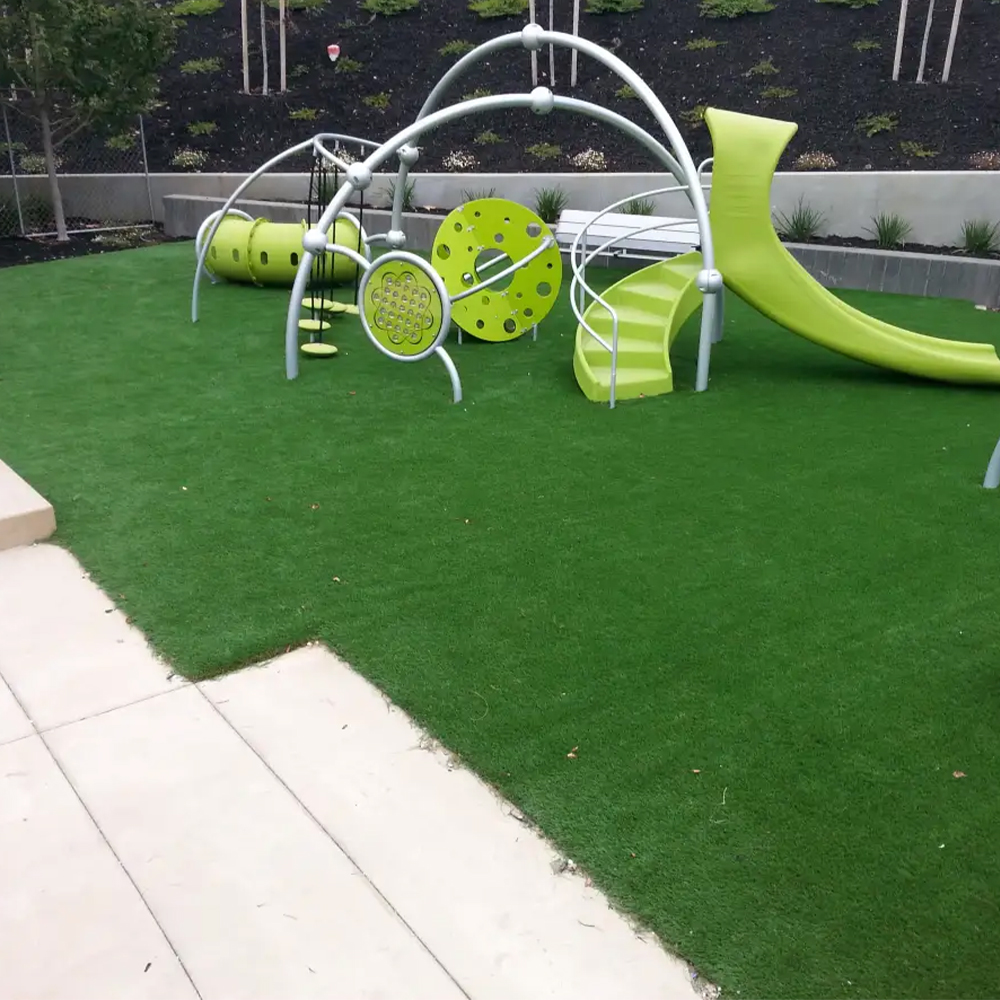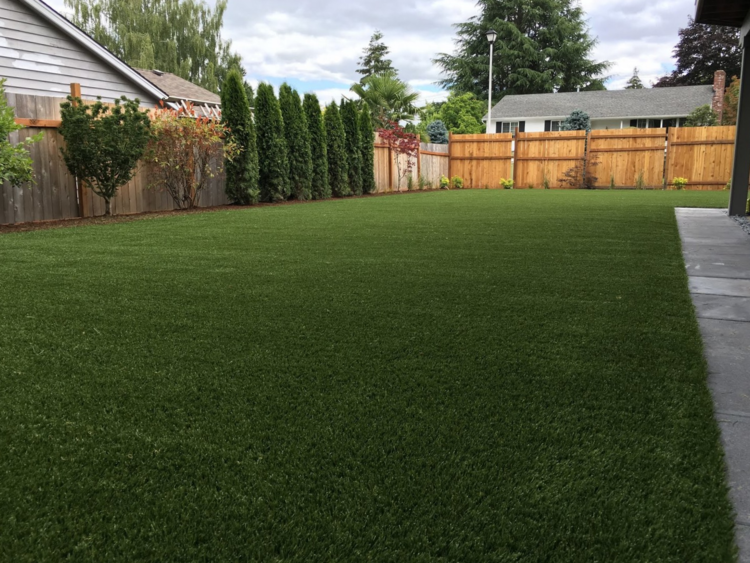Select Reliable Artificial Turf Companies Phoenix for Long-Lasting and Natural-Looking Grass
Select Reliable Artificial Turf Companies Phoenix for Long-Lasting and Natural-Looking Grass
Blog Article
Look Into the Environmental Perks of Opting for Artificial Grass Solutions
The adoption of synthetic lawn solutions presents a compelling possibility to address pressing environmental challenges. By considerably lowering water use and minimizing the application of hazardous chemicals, these options not just advertise lasting landscape design yet likewise shield neighborhood ecosystems.
Water Conservation Perks
One of the most significant advantages of man-made lawn is its capacity to preserve water. Standard turf lawns need considerable irrigation, particularly in locations prone to dry spell or water constraints. In comparison, artificial turf does not need watering, significantly reducing the total demand for water resources. This attribute is specifically beneficial in arid regions where water scarcity is a pushing worry.
By removing the requirement for normal watering, synthetic grass adds to lasting landscape practices and assists mitigate the environmental effect of excessive water usage. The preservation of water extends to the reduction of drainage, which can lead to dirt erosion and waterway pollution.
In addition, the installation of artificial grass permits communities and house owners to assign water sources much more successfully, focusing on important usages such as alcohol consumption water and agriculture. The change in the direction of synthetic grass not just promotes accountable water usage however likewise aligns with wider ecological objectives intended at maintaining natural deposits.
As areas significantly focus on sustainability, the water conservation advantages of man-made lawn offer an engaging case for its adoption in industrial and domestic landscaping jobs.
Decreased Chemical Usage
The transition to synthetic grass considerably decreases the dependence on chemical therapies generally used in natural yard upkeep. Typical turf management generally entails the application of chemicals, herbicides, and plant foods to promote development and control insects. These chemicals can position risks to human wellness, regional wildlife, and the setting, adding to soil and water contamination.
In contrast, fabricated turf removes the requirement for these hazardous materials. By reducing the launch of artificial compounds right into the community, fabricated turf promotes much healthier soil and water systems.
Additionally, the lack of chemical runoff connected with artificial grass installations helps safeguard regional rivers from air pollution, sustaining water life and preserving biodiversity. Arizona turf. As communities significantly prioritize sustainable methods, choosing synthetic grass presents a practical option that straightens with ecological conservation goals. With this change, home owners can delight in rich environment-friendly rooms without endangering eco-friendly health and wellness, leading the means for an extra sustainable future
Reduced Carbon Impact

Additionally, the setup of man-made lawn can lead to considerable water preservation. All-natural grass call for significant amounts of water for irrigation, which not just includes to the carbon impact linked with water extraction and treatment but also strains regional water sources. On the other hand, fabricated lawn requires minimal maintenance, requiring no watering, thus considerably decreasing water use and its linked power expenses.
Furthermore, the durability of man-made grass adds to its decreased carbon effect. With a lifespan of up to 15 years or more, the need for frequent substitutes is lessened, causing much less waste and reduced energy consumption in production and dealing with traditional grass alternatives. On the whole, synthetic grass provides a sustainable option for environmentally mindful landscaping.
Habitat Conservation
Habitat preservation is a crucial factor to consider in the debate over landscape design selections, particularly when contrasting synthetic grass to natural try here grass. All-natural turf yards typically need comprehensive upkeep, including using herbicides, plant foods, and pesticides, which can adversely influence regional communities. These chemicals can pop over here leach right into the soil and waterways, damaging native flora and animals and disrupting neighborhood habitats.
In comparison, synthetic grass offers an opportunity to lower the ecological footprint of landscape design. By choosing synthetic yard, property owners can minimize the disturbance of natural habitats related to traditional yard care methods. Fabricated turf gets rid of the demand for unsafe chemicals, thus securing neighboring wildlife and maintaining the honesty of surrounding environments. The installation of synthetic grass can lead to the conversion of former lawn areas into more biodiverse landscapes, such as pollinator gardens or native plant areas, which can sustain neighborhood wild animals.
Eventually, the shift to synthetic grass not just preserves water and minimizes maintenance efforts but also fosters a more unified partnership between human activities and the natural surroundings, advertising habitat preservation while doing so.
Long-Term Sustainability
Long-term sustainability is an important consider evaluating the benefits of synthetic grass over typical turf lawns. Among the most significant benefits of synthetic grass is its sturdiness; it can last up to 15-20 years with marginal upkeep, whereas natural yard requires frequent reseeding and substitute. This long life decreases the demand for continuous sources, such as water, fertilizers, and pesticides, which are crucial for preserving a healthy and balanced turf lawn.
Additionally, fabricated grass adds to a reduction in carbon emissions connected with yard treatment equipment. Typical lawns frequently require gas-powered mowers, leaners, and blowers, all of which add to air contamination. Phoenix turf companies. On the other hand, synthetic lawn eliminates the demand for such devices, advertising a cleaner environment
Furthermore, the manufacturing of synthetic turf progressively makes use of recycled materials, enhancing its sustainability profile. As manufacturers take on environment-friendly techniques, the environmental footprint of fabricated turf proceeds to lessen.

Final Thought
The adoption of fabricated grass solutions provides considerable environmental advantages, consisting of significant water preservation, minimized dependence on harmful chemicals, and a lower carbon impact. Moreover, synthetic grass aids in preserving natural habitats by reducing land disruption and promoting long-term sustainability via the use of sturdy materials. Jointly, these elements emphasize the potential of synthetic lawn to contribute positively to environmental health and offer a practical choice to standard landscaping this hyperlink techniques in a progressively resource-conscious globe.
In contrast, fabricated grass does not require watering, significantly lowering the general demand for water sources. By decreasing the launch of synthetic substances right into the ecosystem, synthetic grass advertises healthier soil and water systems.
Moreover, the installment of fabricated turf can result in substantial water preservation. In comparison, fabricated lawn requires marginal upkeep, needing no watering, therefore dramatically reducing water use and its linked power prices.

Report this page